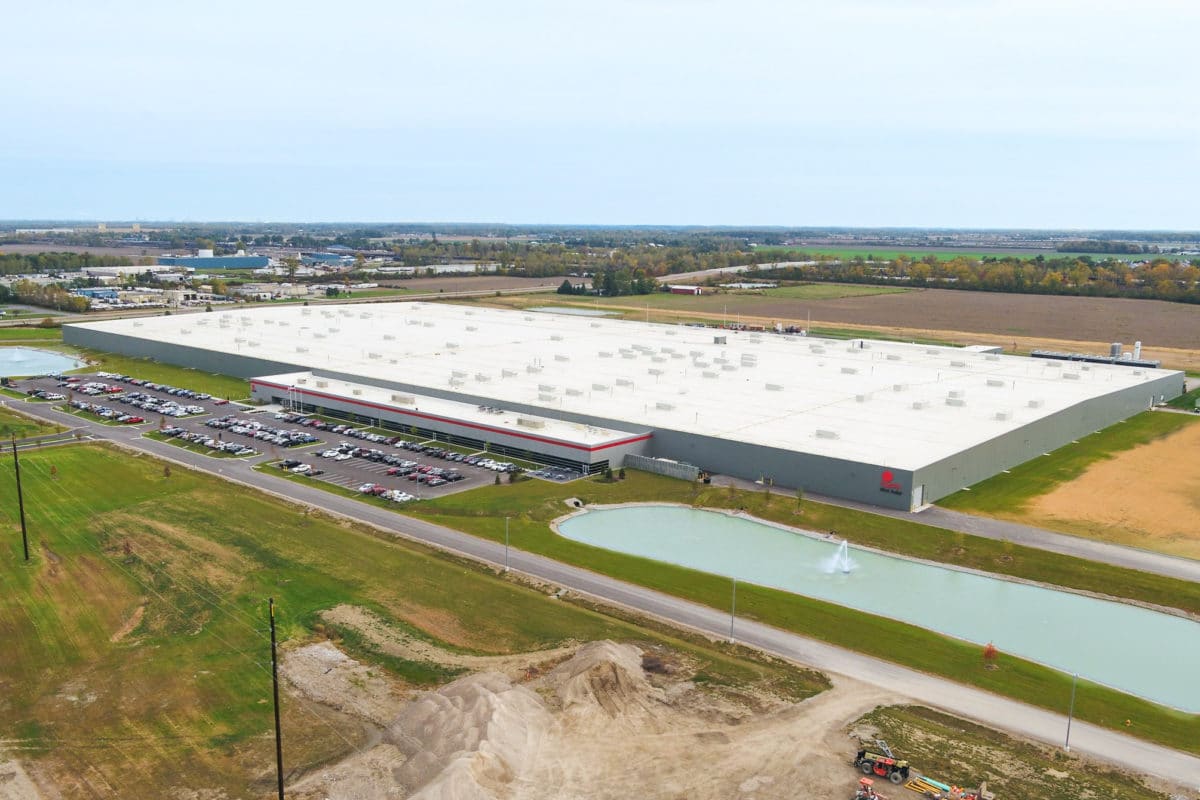First Solar is celebrating its 20th anniversary in the definition of style, as the company now officially holds the crown of the Western Hemisphere’s largest PV module manufacturer. Just announced today, the company has completed its new thin film PV module factory in Lake Township, Ohio, its second factory in the United States.
We’re not clear what the exact capacity is. First Solar had earlier described the factory as being able to produce 1.2 GW of modules annually, however it is possible that this has increased due to higher efficiencies and/or higher throughput. At last count First Solar’s Perrysburg factory was clocking in at 640 MW annually, which would bring the two to 1.84 GW, but First Solar is now claiming 1.9 GW.
(Editor’s note: Later in the day, First Solar described the plant at Lake Township as 1.3 GW, solving this mystery of the capacity figures.)
Earlier this year Hanwha Q Cells put a 1.7 GW PV module factory online in Georgia, as the largest single module factory in the Western Hemisphere, but First Solar’s two Ohio factories exceed this.
First Solar’s new factory will employ 500 workers, featuring one million square feet of floor space. The production within will focus solely on the company’s new and wildly successful large-format Series 6 modules, with each module set to be produced in 3.5 hours.
“Our Lake Township facility is a marvel of modern manufacturing, a factory of the future, operational today. Its levels of automation, digitalization, machine learning, and artificial intelligence demonstrate that the ambitions of Industry 4.0 are not out of reach for the PV manufacturing industry,” said Tymen de Jong, chief operating officer at First Solar. “We’re incredibly proud of what we have achieved, and we are proud to have achieved it in Northwestern Ohio, the technological home of American solar.”
All this production will be sorely needed, as the company has over 12.4 GW of solar modules booked for sale, with manufacturing capacity currently sold out through the middle of 2020. And, while modules from this facility are not expected to ship until next year, First Solar is expecting to ship 5.4 – 5.6 GW of modules over the course of 2019.
Also included in this Giga-plus-a-little-extra factory, is a $265 million transparent conductive oxide (TCO) coated glass factory being built by the NSG Group in Troy Township, Ohio, its first new float glass line in the country since 1980.
Even beyond sheer production capacity, this is a huge step for American module makers. First Solar is affirming itself as the only U.S. module maker that has been able to hold out against the juggernaut of Chinese crystalline silicon solar manufacturing.
Congratulations to the new champions, First Solar, riding Series 6 into the American solar manufacturing record books.
Correction: This article was corrected around 11:30 AM EST on October 24. The initial version listed First Solar’s U.S./Ohio manufacturing capacity as 19 GW, when it should have said 1.9 GW. We regret the error. This article was further updated & corrected at 8:20 AM EST on October 25 time to clarify capacity figures, including bookings to date.
This content is protected by copyright and may not be reused. If you want to cooperate with us and would like to reuse some of our content, please contact: editors@pv-magazine.com.









This is great news for another opportunity to prove that solar power can be competitive with oil, gas and coal when manufactured locally and by the most efficient methods.
This is where our R&D funds can be most beneficial. Congrats First Solar!!!
Interesting: “Also included in this Giga-plus-a-little-extra factory, is a $265 million transparent conductive oxide (TCO) coated glass factory being built by the NSG Group in Troy Township, Ohio, its first new float glass line in the country since 1980.”
The ponderance of the “tandem” solar PV panel could well be helped along with this process. Using solar cell technology and then spraying on a coating of perovskites to enhance light spectrum harvest. Perovskites have been determined to be hygroscopic and must have a robust seal from moisture. This (TCO) could be the fix for this particular problem and the path towards the 30% or more efficiency of solar PV panels for the same area.